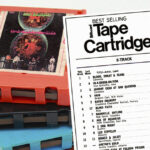The ratio of the pens in the fjord is 97.5% water to 2.5% salmon. Farm-raised salmon from Norway is able to have much more control to prevent disease and mortality. Seafood from Norway is all about sustainability.
What is not controversial are the health benefits of eating salmon. The World Health Organization advises eating oily fish like salmon at least twice a week, because it’s a rich source of protein and also one of the best sources of omega-3 fatty acids.
Why Norwegian farmed Atlantic Salmon makes SeafoodWatch.org ‘Avoid’ list. Norway is the world’s largest producer of farmed Atlantic salmon with 366 million fish produced in about 1,000 large ocean pens off the coast. Norway has the largest population of wild Atlantic salmon, yet the number of farmed salmon is 250 to 700 times more than wild salmon.
Sigmund Björgo of the Norwegian Seafood Council, a public company owned by the Norwegian state that works with the seafood industry, says the film crew never approached the salmon farming industry to get their side of the story. He added that Norway’s wild salmon stock is doing well even with the many salmon farms in the country.
What is Norway’s most important export?
Norwegians pioneered the contemporary technique of salmonid aquaculture using floating sea cages. Fish is Norway’s most important export aside from oil, and at least 70 percent of this exported fish is farmed.
When you compare farmed to wild salmon, one immediately runs into differences of opinion about food safety and food quality. Consumer questions about farmed salmon include concerns about elevated levels of Polychlorinated biphenyls (PCBs), the presence of antibiotics or other chemicals, and the possibility of disease organisms.
Because fish are farmed in such close proximity, “ sea lice” infestation throughout the farm can be a serious problem. The “sea lice” that infect salmon are copepod crustaceans that attach to the skin and as adults graze on the mucus, blood, and skin. Such infestations make the salmon unmarketable.
If you’re in Europe considering this choice, there’s a good chance the salmon was farmed in Norway, or possibly Scotland. In North America, farmed salmon in restaurants and grocery stores comes from Maine, Washington, Canada (especially British Columbia), or Chile. Farmed salmon are almost exclusively Atlantic salmon.
If you’re in Europe considering this choice, there’s a good chance the salmon was farmed in Norway, or possibly Scotland.
Wild-caught Pacific salmon such as chinook, coho, or sockeye may still be more popular than farmed Atlantic salmon, but it may cost you at least twice as much and only be available certain times during the year in grocery stores or restaurants.
Salmon is an excellent source of protein and omega-3 fatty acids. There is no difference in the nutritional value between farmed Atlantic and wild Atlantic or Pacific salmon.
Which country has the most salmon?
Norway is the world’s largest producer of farmed Atlantic salmon with 366 million fish produced in about 1,000 large ocean pens off the coast. Norway has the largest population of wild Atlantic salmon, yet the number of farmed salmon is 250 to 700 times more than wild salmon. Farmed salmon require a diet rich in fish oil.
Open net pen farmed Atlantic salmon from Norway receive an “Avoid” due to high concerns regarding the use of chemicals, the impacts of escapes on wild salmon and sea trout, and the transfer of parasites to wild populations.
The Hardangerfjord is Norway’s largest fjord and a major tourist attraction for visitors to Bergen. Farmed salmon outnumber wild salmon 5000 to 1 in Hardangerfjord. In some years the number of escaped salmon from pens outnumbers the wild salmon population.
Farmed salmon require a diet rich in fish oil. Norway uses 25% of the world’s fish oil in salmon feed. There are three criteria where farmed salmon falls short in its environmental impact. 1.
The use of antibiotics is considered low in Norway, however, there was a 300% increase in the total amount of antibiotics used between 2011 and 2012 and 88% of these antibiotics are also used for human treatment. 2. Disease – the farmed population of Atlantic salmon vastly outnumbers wild salmon.
Sharing is caring, don’t forget to share this post with friends !


